31 - Mennonite Church in the Village of Ibersheim, Germany
Our Hiestands' Church Home 350 Years Ago
On Sunday, June 25, 2023, our Hiestand-Haston European Heritage Tour group will worship here, where our ancestors worshiped. Pastor Andreas Kohrn has invited us to join their congregation for the service and to enjoy their annual summer “BBQ Grillfest” after the service!

“The parish of Ibersheim is probably the first and oldest Mennonites parish founded after the Thirty Years War (1618-1648) in the former Palatinate.”
Author Unknown
Jacob Hiestand was one of the earliest ministers in the Ibersheim Mennonite Church. He led the congregation during one of its most difficult times of danger and terror.
Text source: Worms-Ibersheim: A Walking Tour through a Cultural Heritage Village by Dr. Christian Land and Dr. Irene Spille

The church was built as the center of the village in 1836. An older Mennonite church, probably from the early 18th century, stood at the same location. Prior to its construction, church services were held in private homes which had a large room, the so call “Sälchen” (little hall). Because the territorial princes refused to allow them to build a church with a tower and bell, the first Mennonite Church was a plain house with a meeting hall for church services and a schoolroom on the ground floor. A council room was also erected on the upper floor. With the changes in society, it became possible to build a church with a bell tower in 1836. Before acquiring their first bell in 1806 (which is in use even today at the cemetery), a horn was used to call people to church services.
In accordance with the principles of faith, the church is very simple and plain. It is a plastered building in the unadorned style common to Classicism, with a long rectangular layout facing the southeast. The long side of the building is divided by round-arched windows almost as high as the walls. The door to the church entry has a round-arched skylight with the inscription “1836.” The church in Ibersheim is the only Mennonite church in Germany with a bell tower. In 1866, the chimes, comprising two bells, were solemnly dedicated. The only decoration on the bells is the date “1865.” and the inscription “Property of the Mennonite Congregation Ibersheim.”
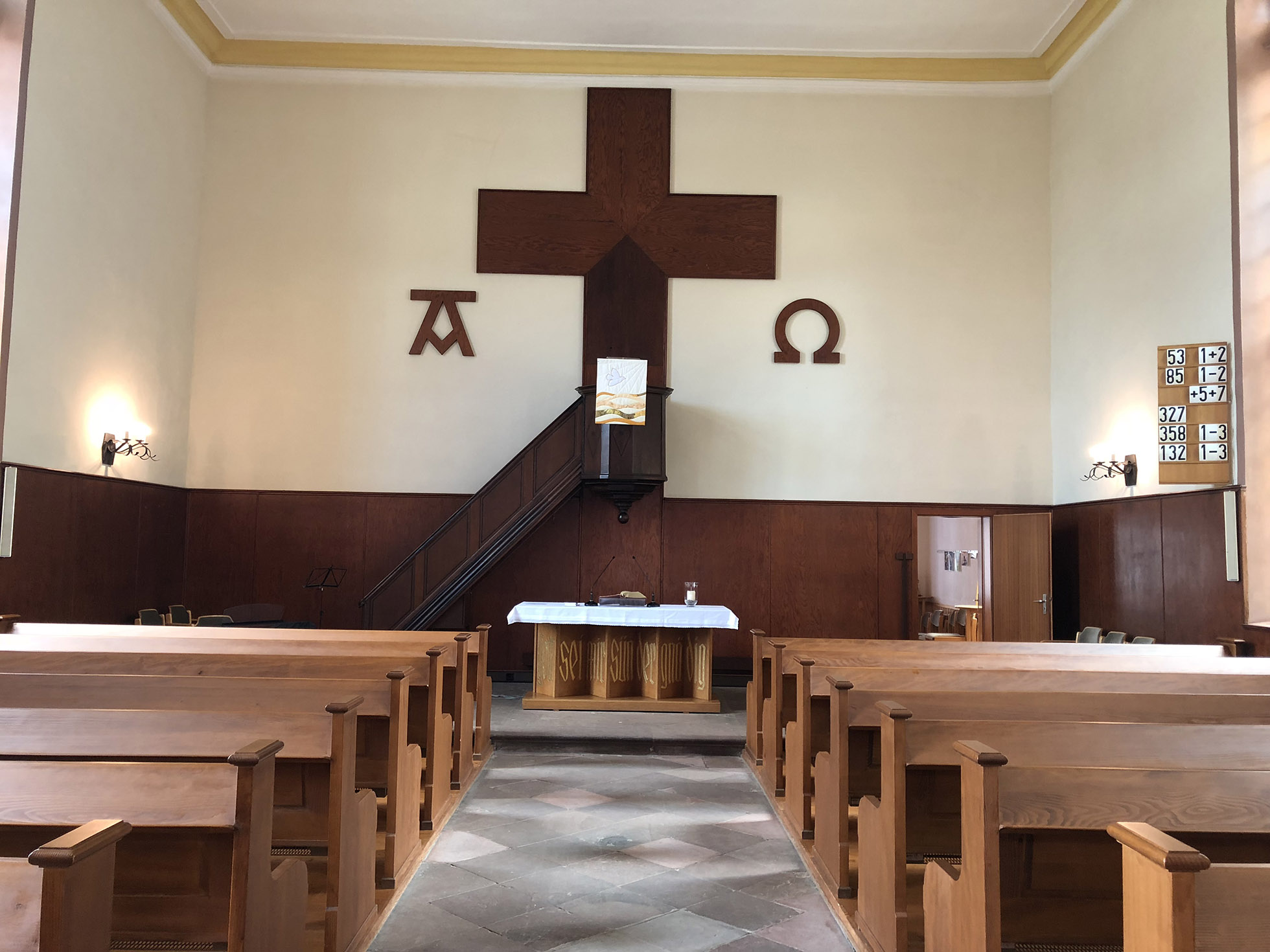
The church’s interior is a plain hall with two windows on each side. The middle aisle leads directly to the communion table and pulpit, which is placed directly behind it. During the renovation of the church in 2012, the benches on both sides of the room were built after the model of the old benches. In 1972, the former stone communion table was replaced by a wooden one which was designed and created by Fritz Kehr. The table rests on a base made of 7 parts set in a zig-zag form. The altar panels are decorated with the proverb “God be merciful to me. a sinner.” The writing is fragmented into seven parts and is carved out in high Gothic gold-plated letters. The lower part of the church walls is paneled in wood. Rising behind the altar, also in the form of wooden paneling, is a cross, donated in 1936 and as high as the room itself. It is flanked by the letters alpha and omega. The pulpit is mounted on this cross. There is a stairwell to the side of the pulpit leading up to it.

The organ, situated in the very simple west gallery which itself rests on pillars, originates from the earlier church. It was built in 1821 or earlier by the organ builder Philipp Christian Schmidt (from Kirchheimbolanden), who was a student of the organ builder Stumm. It was last restored in 2004. The organ pipes had to be handed over in the First World War. They were replaced in 1921. The classical organ case with its decorations and woodcarvings is comparatively elaborate for this church interior.

On the eastern side, there are two separate rooms, one above the other. Over the years these served various purposes. for example as living spaces for the church servants, as a kindergarten, council room, and up to 1958, as a schoolroom for the first grade to fourth-grade classes. Now they are used by the church congregation exclusively as community or youth areas. For many decades now the church has also been used by the Protestants and Catholics for their church services. The extensive renovation carried out in 2012 ensures that the church can continue to provide a space for shared faith, life, and experiences for years to come.
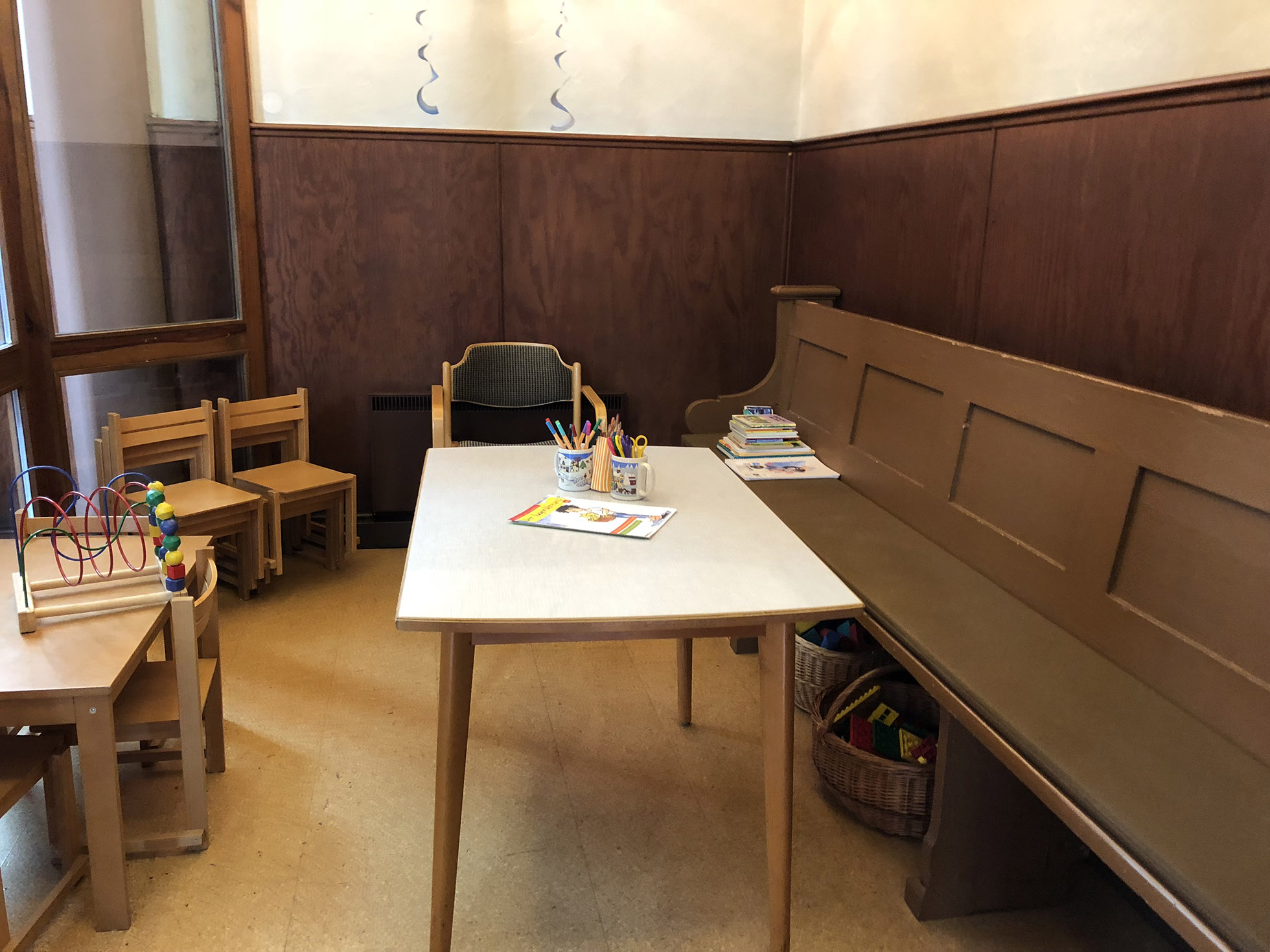
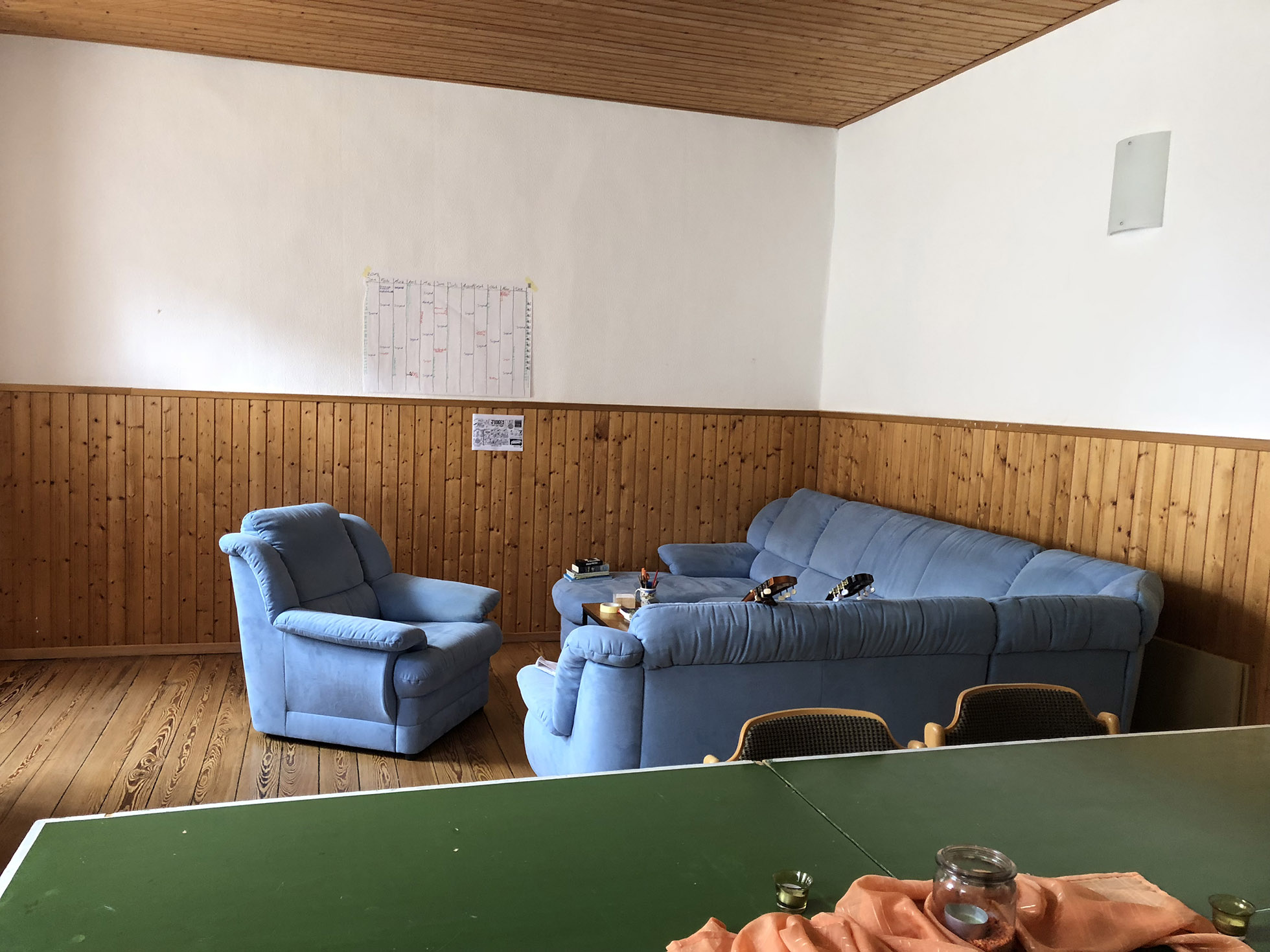
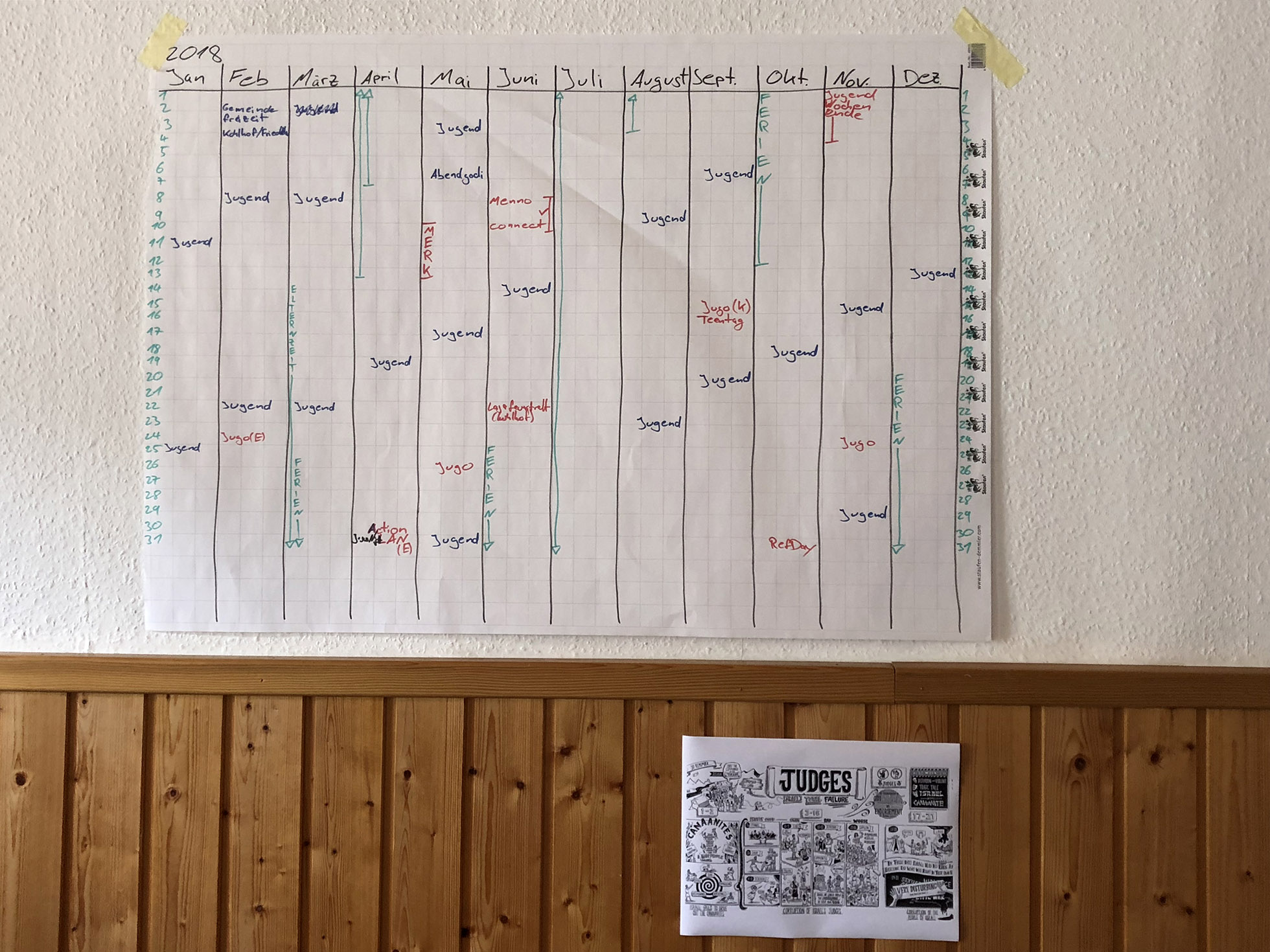
On the wall of the property at Kirchplatz 2, there is an inscription which is characteristic for the village and life of the first Mennonites in Ibersheim: “The blessing of the LORD, it maketh rich, and He addeth no sorrow with it – Ora et labora – pray and work.”
The Latin wording reminds one that there was once a Latin School in Ibersheim and it is meant to illustrate the education and character of the property owner.

In May of 2017, the Ibersheim Mennonite congregation consisted of 123 members, but only a few of these live in the village itself.[i] Currently, the church building constructed in 1836 is the only church in the village
[i] Andreas Kohrn, personal email to the author, November 11, 2017. Reverend Kohrn was the pastor of the Ibersheim congregation at the time of the email.

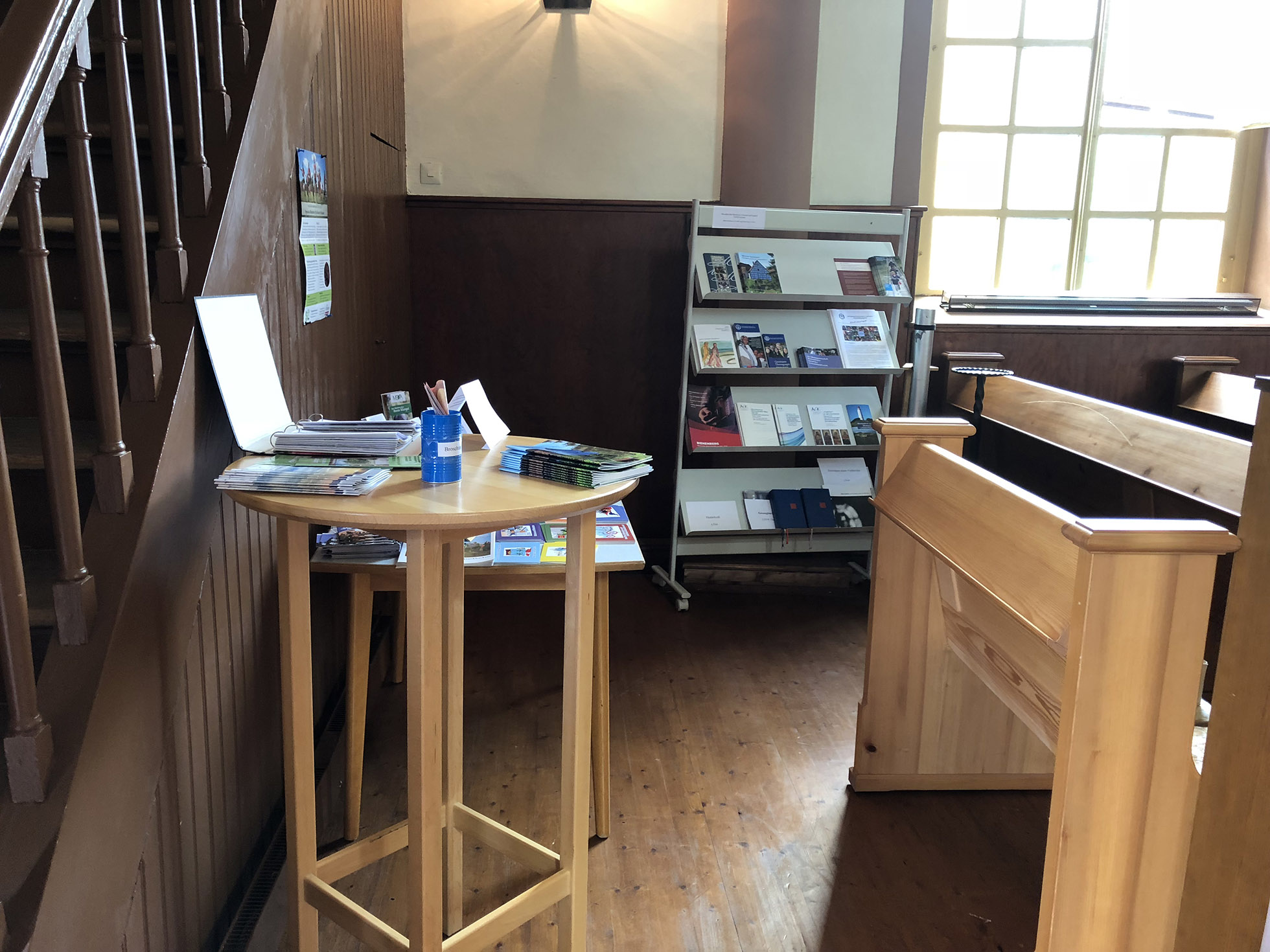
May 2020 Cyber-Service in the COVID-19 Era
Share this with Hastons or related family members who might be interested in the June 14-27, 2023 Hiestand-Haston European Heritage Tour.


One thought on “31 – Mennonite Church in Ibersheim – Where Our Ancestors Worshipped”
I’m very interested in this but unfortunately our travelling days are over. Our family records show a Hans Hisy baptizing people before leaving for America in 1727. He was very likely a Mennonite minister.
David Heise
Ontario Canada